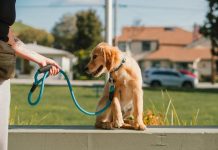Welcoming a new puppy into your home is an exciting and heartwarming experience, filled with moments of joy and curiosity. As you embark on this journey together, teaching your puppy basic commands is one of the most rewarding steps you can take to ensure a happy and harmonious life. Not only does it strengthen the bond between you and your furry friend, but it also lays the foundation for a well-behaved companion. In this article, we’ll explore some simple yet effective tips for teaching your puppy essential commands, turning training sessions into enjoyable and enriching experiences for both of you. Whether you’re a first-time pet owner or a seasoned dog lover, these tips will guide you in nurturing a confident and obedient pup, ready to explore the world by your side.
Understanding Your Puppys Learning Style
Just like humans, puppies have unique ways of processing information, and understanding these can make training a joyful experience for both of you. Some puppies are visual learners, thriving when they see demonstrations of what you want them to do. Others might be auditory learners, responding better to verbal cues. And some are kinesthetic learners, who learn best by doing and experiencing.
- Visual Learners: Use hand signals in conjunction with verbal commands to help your puppy understand what you expect.
- Auditory Learners: Focus on clear, consistent verbal cues and consider using different tones for different commands.
- Kinesthetic Learners: Engage them in physical activities and reward them immediately after they perform the desired action.
By observing your puppy’s reactions, you can tailor your approach to suit their learning style, making training sessions more effective and enjoyable. Remember, patience and consistency are key. Celebrate small victories and always end on a positive note.
Creating a Positive Training Environment
When it comes to teaching your puppy basic commands, the environment in which you train can make all the difference. Establishing a space that is both welcoming and consistent will encourage your furry friend to focus and learn effectively. Here are some ways to create a positive training atmosphere:
- Choose a Quiet Space: Find an area with minimal distractions. This will help your puppy concentrate solely on the task at hand, enhancing their ability to grasp new commands quickly.
- Be Consistent: Use the same location for training sessions whenever possible. Consistency in the environment can reinforce learning and provide a sense of security for your puppy.
- Stay Positive: Positive reinforcement is key. Reward your puppy with treats, praise, or playtime whenever they successfully follow a command. This not only makes learning fun but also builds a trusting relationship.
- Short and Sweet Sessions: Puppies have short attention spans, so keep training sessions brief—around 5 to 10 minutes—and frequent to maintain their interest and enthusiasm.
By setting up a positive training environment, you not only make the learning process enjoyable for your puppy but also pave the way for a lifelong bond based on trust and mutual respect.

Mastering the Art of Consistent Commands
When it comes to training your puppy, consistency is your best friend. Puppies thrive on routine and predictability, so it’s crucial to establish a set of commands that remain the same every time. This helps them understand exactly what you expect from them. Here are some tips to maintain consistency in your training:
- Use the same words and tone: Stick to specific words for each command and use a consistent tone of voice. For instance, if “sit” is your chosen word, ensure everyone in the household uses “sit” instead of “sit down” or “take a seat”.
- Repetition is key: Practice the commands multiple times a day, but keep sessions short to maintain your puppy’s interest. Regular practice will reinforce their learning.
- Be patient and persistent: Every puppy learns at their own pace. If your puppy doesn’t respond immediately, avoid switching commands or showing frustration. Instead, gently guide them to understand the command over time.
Remember, the more consistent you are, the more confident your puppy will become in understanding and following your commands. Happy training!

Rewarding Progress and Building Confidence
Celebrating your puppy’s achievements is a key part of their learning journey. Positive reinforcement not only helps solidify the command in their mind but also boosts their confidence. When your puppy successfully follows a command, make sure to acknowledge their effort with enthusiasm. Praise, treats, or even a favorite toy can be effective rewards. The goal is to associate their obedience with positive outcomes, making them eager to repeat the behavior.
- Use high-value treats that your puppy loves and keep them reserved for training sessions.
- Incorporate verbal praise and gentle petting to create a comforting atmosphere.
- Keep training sessions short and fun to maintain their interest and prevent frustration.
By reinforcing their progress consistently, you’ll nurture a sense of accomplishment in your puppy. This approach not only aids in learning commands but also strengthens the bond between you and your furry friend. As your puppy becomes more confident, they’ll be more willing to tackle new challenges and learn even more complex commands.
















